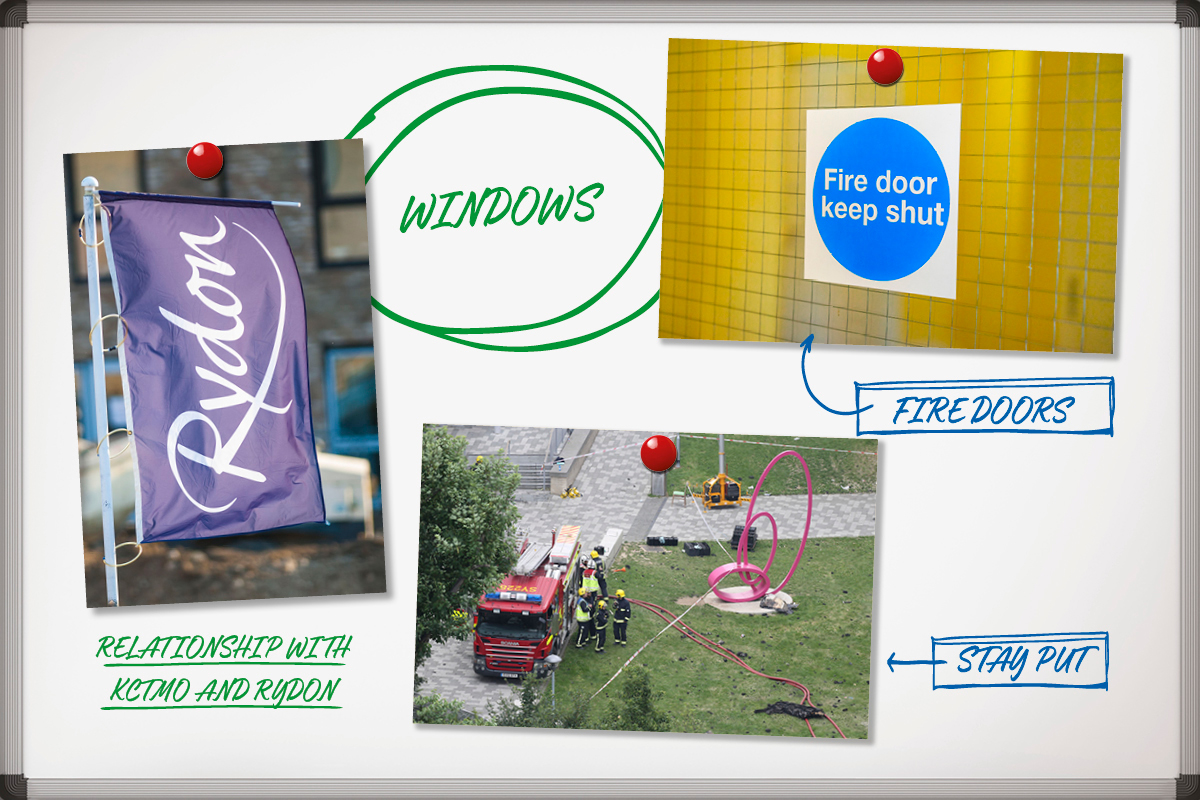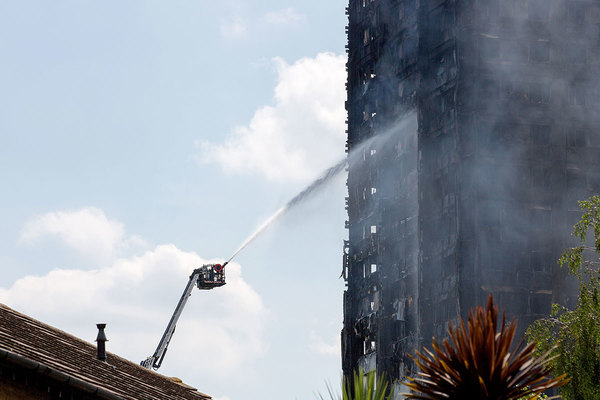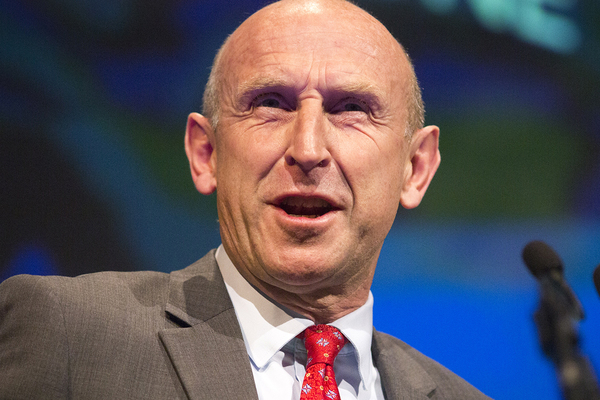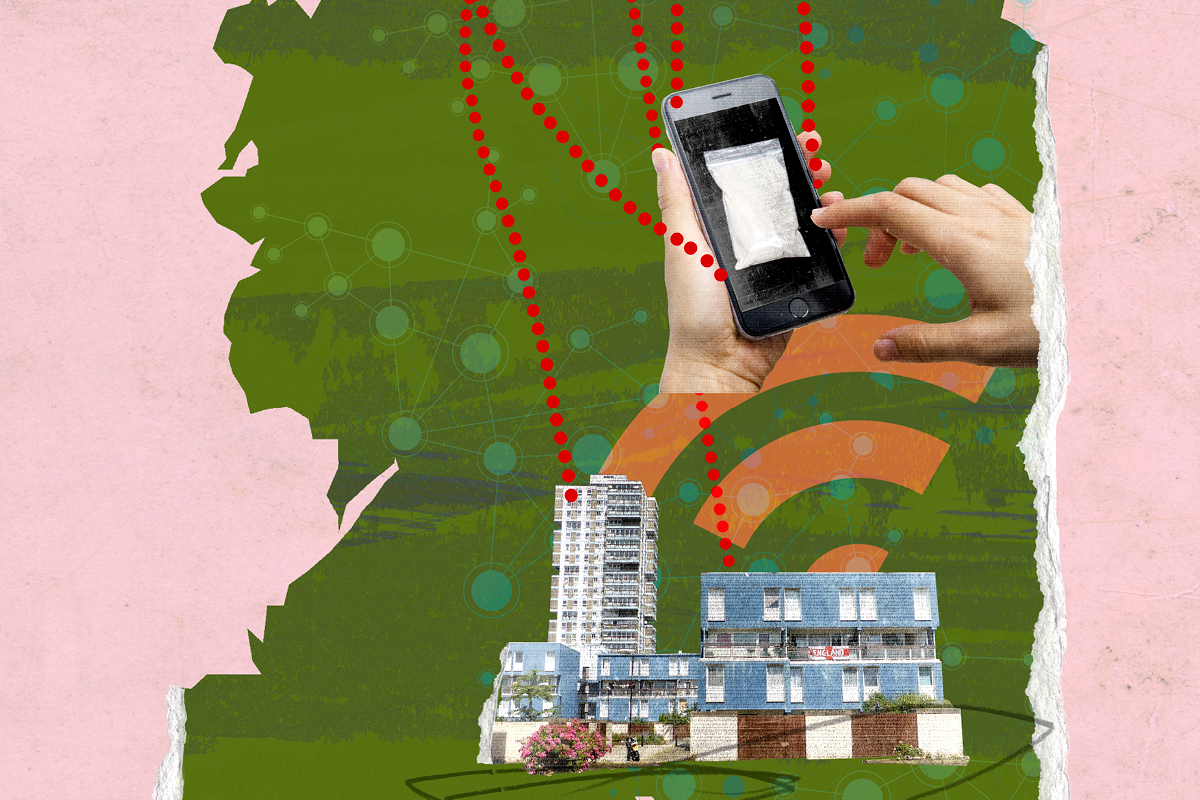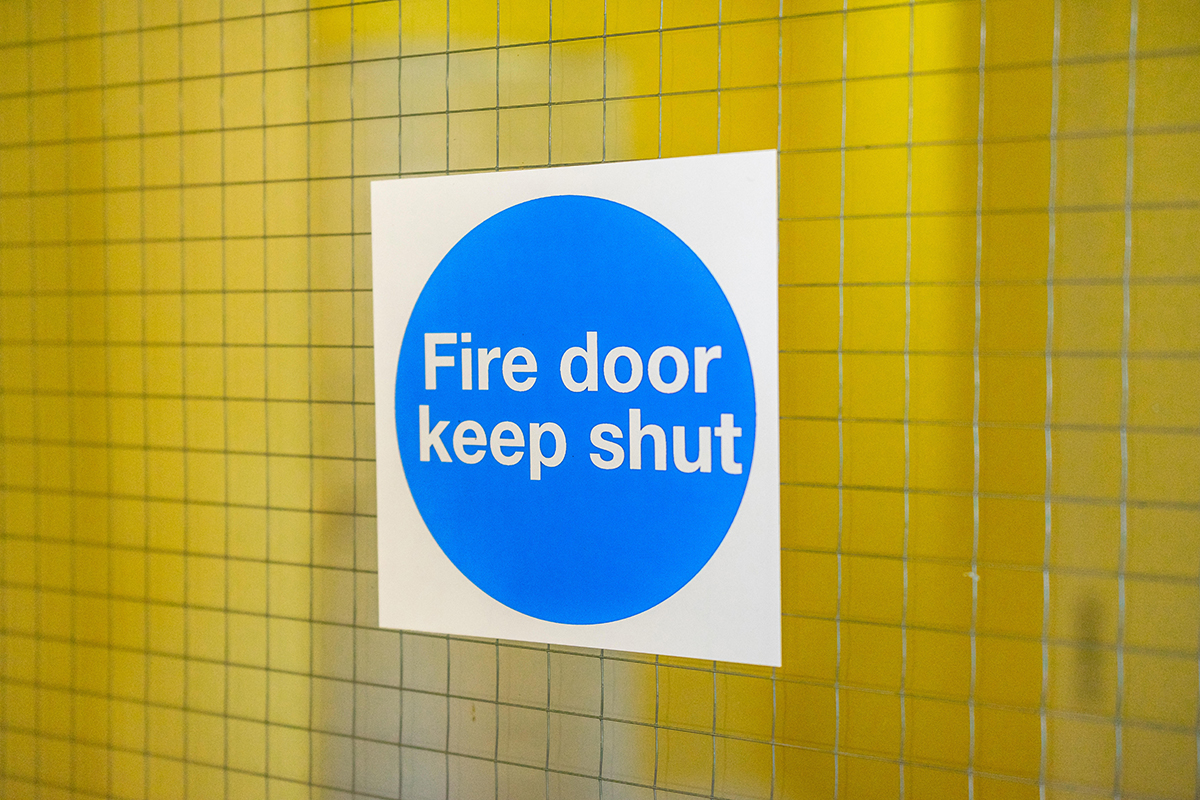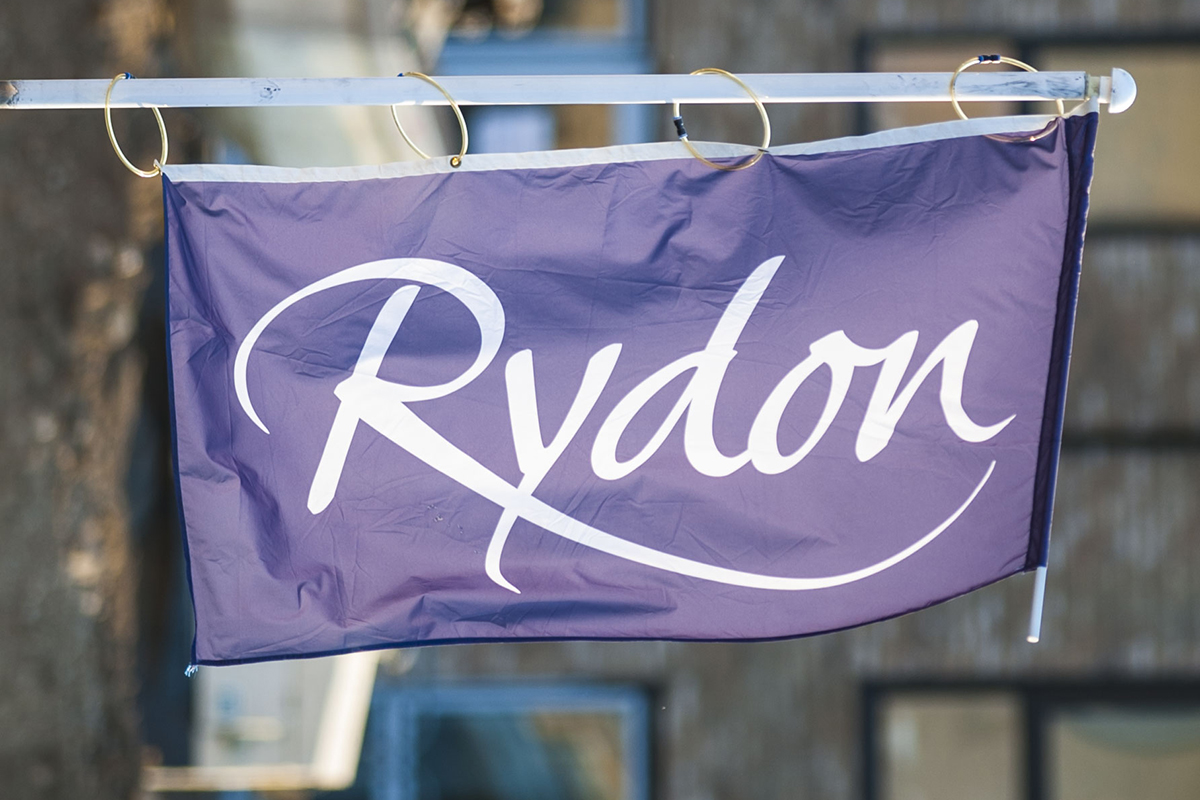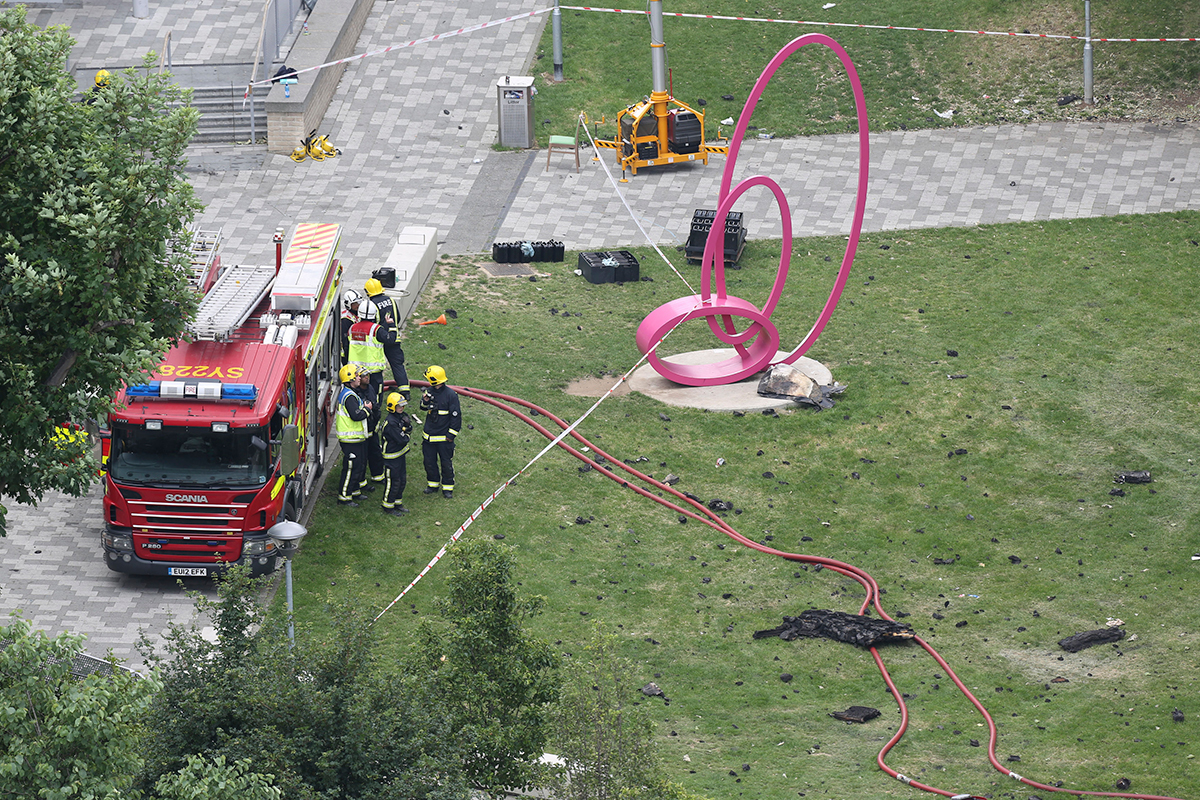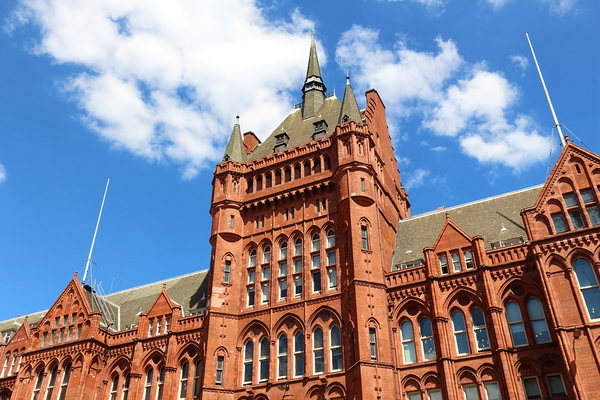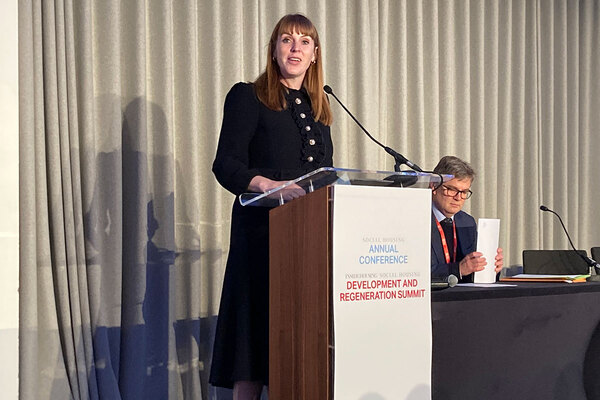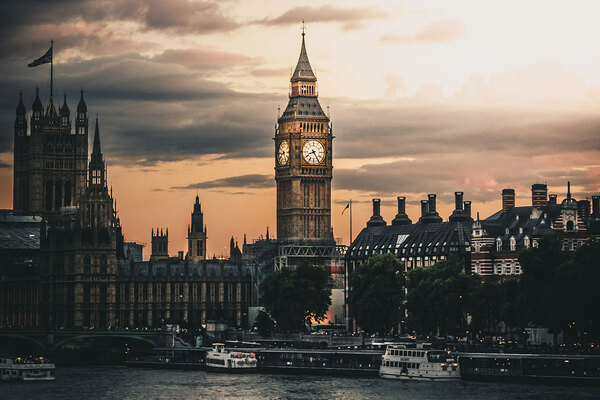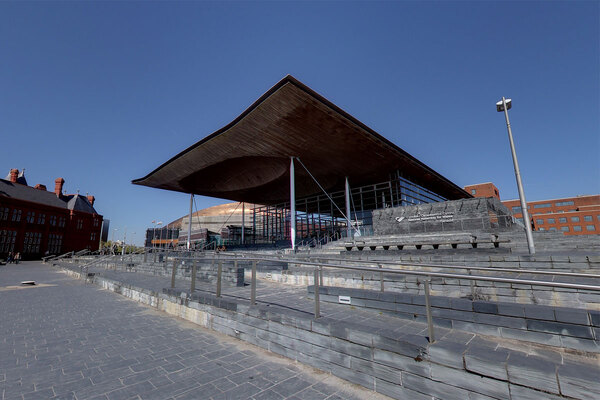You are viewing 1 of your 1 free articles
Four things we learned from the Grenfell survivors’ inquiry evidence
The evidence of survivors to the Grenfell Inquiry concluded at the start of this month. Peter Apps assesses what we’ve learned from their testimonies. Pictures by Alamy, Press Association and Rex Features
Windows
A key question since the fire has been how it broke out of Flat 16 and ignited the cladding, and how it then broke back in to the building and killed residents sheltering in their flats.
The evidence of survivors has pointed towards issues with the windows, installed during the same refurbishment which fitted the cladding, as contributing. Many statements describe flames coming in through windows – others describe seeing it move across window panels on the outside of the building.
Windows was an area of concern raised by many residents (at least 29) in their evidence to the inquiry – saying the new windows had a draft and, in some cases, reporting that gaps were filled up with a mastic, resin-like substance by contractors Rydon, which fitted the new windows.
A final expert report from Professor Luke Bisby put the focus on the extractor fans in the windows as providing a route into flats from the burning cladding. He said that extractor fans “were in many cases the first components of the window assemblies… to fail and fall away during the fire”.
The fans, manufactured by Nuaire as part of its Cyfan range, was surrounded in the window by aluminium and Kingspan insulation panels.
Fire doors
The fire door problems at Grenfell Tower were terrifyingly widespread. We already knew that 106 wooden doors in Grenfell were replaced in 2011 with a new composite ‘Suredor’ model made by Manse Masterdor, which has since failed safety tests.
What we have learned from the residents’ evidence is the shocking prevalence of faults with these doors – 46 of 81 residents to give evidence (56%) have referred to problems with their fire doors. The vast majority of these complaints have been about missing self-closers.
Expert evidence released by the inquiry this week suggests this may have been a major contributing factor in the early spread of smoke within the communal areas of the tower – which resulted in residents being trapped in flats and hampered the efforts of firefighters to reach them.
Professor Jose Torero said in his report: “Given the information available, it is most likely that this occurred because doors were open. This highlights the importance of self-closing mechanisms for doors.”
This line of evidence raises difficult questions for building manager the Kensington and Chelsea Tenant Management Organisation (KCTMO) – which appears not to have responded to some specific resident complaints on this point, and in others to have actively removed the self-closers when they broke without replacing them.
A major warning to other housing providers then: ensure self-closers in your tower blocks are in good working order.
Relationship with KCTMO and Rydon
Residents have lined up to describe how difficult their relationship with KCTMO and contractor Rydon had become during the refurbishment and in the years before the disaster.
Samuel Daniels, who lived on the 16th floor, said: “The relationship with Rydon was toxic. Residents resented them being there and the disruption to their lives. The builders were rude to residents and we were rude back.”
Edward Daffarn in his evidence recalls that “around 40” households put up signs on their front doors reading “no entry to Rydon”. Mr Daffarn, who ran the now-famous Grenfell Action Group blog, also accused KCTMO of effectively overseeing “managed decline” of the Lancaster West Estate.
Rydon was responsible for the refurbishment which included the fitting of cladding and new windows. KCTMO was responsible for the internal features of the building – including fire doors.
The extent to which missed warnings (particularly on fire doors and windows, with residents unaware of the dangerous combination of materials used in the cladding) resulted from the broken relationship will be explored further in the second half of the inquiry. But for now, it is enough to serve and underscore the importance of social landlords listening to and engaging with angry residents.
Stay put
Unsurprisingly, there is a substantial amount of anger from residents over the stay put advice they were given by the fire service.
For example Farhad Neda, who escaped from the 23rd floor, said he felt residents were “fatally let down”. “Having been in contact with the firefighters outside the tower, I was told on several occasions that they were on the way to get us. I feel that it is the false hope which prevented a number of people from escaping the tower that night,” he said.
Indeed, many felt this anger – including Paulos Tekle, the father of five-year-old Isaac who got lost while evacuating the tower and died. Mr Tekle told the inquiry that he was visited by a firefighter at close to 2am and told to remain in his flat and await rescue. When the family eventually made their bid to escape at 2.54am, conditions were barely survivable on the stairs.
While the advice given by the fire service was clearly offered in good faith and based reasonably on the evidence of previous fires, it seems clear that some residents were let down.
The official position on stay put from the National Fire Chiefs Council says that it is “usually safer to stay in your flat unless the heat or smoke from the fire is affecting you”.
But Natasha Elcock told the emergency call handler at 1.43am that there was smoke coming into her flat. She continued to be told to stay put until almost 3am, by which point she was lying on the floor to keep away from the smoke. She’d phoned 999 five times during this period and at every stage was told to stay in the flat. This evidence is not uncommon and raises difficult questions over the strategy and the advice.
Never Again campaign
In the days following the Grenfell Tower fire on 14 June 2017, Inside Housing launched the Never Again campaign to call for immediate action to implement the learning from the Lakanal House fire, and a commitment to act – without delay – on learning from the Grenfell Tower tragedy as it becomes available.
One year on, we have extended the campaign asks in the light of information that has emerged since.
Here are our updated asks:
GOVERNMENT
- Act on the recommendations from Dame Judith Hackitt’s review of building regulations to tower blocks of 18m and higher. Commit to producing a timetable for implementation by autumn 2018, setting out how recommendations that don’t require legislative change can be taken forward without delay
- Follow through on commitments to fully ban combustible materials on high-rise buildings
- Unequivocally ban desktop studies
- Review recommendations and advice given to ministers after the Lakanal House fire and implement necessary changes
- Publish details of all tower blocks with dangerous cladding, insulation and/or external panels and commit to a timeline for remedial works. Provide necessary guidance to landlords to ensure that removal work can begin on all affected private and social residential blocks by the end of 2018. Complete quarterly follow-up checks to ensure that remedial work is completed to the required standard. Checks should not cease until all work is completed.
- Stand by the prime minister’s commitment to fully fund the removal of dangerous cladding
- Fund the retrofitting of sprinkler systems in all tower blocks across the UK (except where there are specific structural reasons not to do so)
- Explore options for requiring remedial works on affected private sector residential tower blocks
LOCAL GOVERNMENT
- Take immediate action to identify privately owned residential tower blocks so that cladding and external panels can be checked
LANDLORDS
- Publish details of the combinations of insulations and cladding materials for all high rise blocks
- Commit to ensuring that removal work begins on all blocks with dangerous materials by the end of 2018 upon receipt of guidance from government
- Publish current fire risk assessments for all high rise blocks (the Information Commissioner has required councils to publish and recommended that housing associations should do the same). Work with peers to share learning from assessments and improve and clarify the risk assessment model.
- Commit to renewing assessments annually and after major repair or cladding work is carried out. Ensure assessments consider the external features of blocks. Always use an appropriate, qualified expert to conduct assessments.
- Review and update evacuation policies and ‘stay put’ advice in the light of risk assessments, and communicate clearly to residents
- Adopt Dame Judith Hackitt’s recommended approach for listening to and addressing tenants’ concerns, with immediate effect
CURRENT SIGNATORIES:
- Chartered Institute of Housing
- G15
- National Federation of ALMOs
- National Housing Federation
- Placeshapers
The Grenfell Tower Inquiry
Closing statements
Day 85: victims' lawyers attack the fire brigade
Further expert evidence
Including some additional evidence from emergency call handlers, bereaved and relatives
Day 84: further evidence from survivors and relatives
Day 83: swift evacuation of tower possible if residents alerted
Day 82: initial fire was extinguished but then returned to the flat
Day 81: overheating fridge-freezer most likely cause of fire
Day 80: fire doors installed did not match product tested
Day 79: resident advised to stay put despite fire in flat
Day 78: insulation and cladding material below required standard
Day 77: molten plastic spread blaze down tower
Day 76: 'stay put' should be dropped when fire spreads across floors
Other witness evidence
Police, ambulance, gas suppliers, council, TMO and call room operators give evidence
Day 75: call room operators give evidence
Day 74: further evidence from TMO officers
Day 73: TMO boss failed to pass information to firefighters
Day 72: fire finally extinguished when gas switched off
Day 71: further questions over stay put advice
Day 70: the police evidence
The bereaved, survivors and relatives’ evidence
Day 69: video shows smoke billowing through fire door
Day 68: KCTMO removed self closing mechanism and never replaced it
Day 67: gaps in cladding fixed with duct tape
Day 66: 'don't fix broken system with a sticking plaster'
Day 65: survivor dragged disabled man down nine floors to safety
Day 64: KCTMO 'did not replace broken fire door'
Day 63: foam insulation inside cladding 'exposed' says survivor
Day 62: father gives harrowing account of son's death
Day 61: council’s management organisation slammed for faulty electrics
Day 60: stay put advice ‘led to deaths’, residents say
Day 59: residents describe problems with new windows
Day 58: survivor describes how daughter saved his life
Day 57: firefighter evidence ‘a slap in the face’, says survivor
Day 56: relations with contractor were ‘toxic’
Day 55: resident 'never happy' with stay-put advice
Day 54: tenant gives evidence about housing association
Day 53: stay put advice 'felt like trap'
Day 52: resident saved by son's phone call
The firefighters’ evidence
Day 51: firefighter feared encouraging residents to jump
Day 50: the LFB commissioner
Day 49: fire chief reveals frustration over lack of building plans
Day 48: internal fire spread 'bigger story' than cladding
Day 47: fire officer considered evacuating crews over building collapse fears
Day 46: 'we were improvising' senior firefighter admits
Day 45: firefighter urged for abandonment of 'stay put' policy
Day 44: firefighter recalls radio signal difficulties
Day 43: call hander 'uncomfortable' with insisting residents stay put
Day 42: residents only told to leave if they called fire brigade back
Day 41: breathing equipment delay 'hampered rescues on upper floors'
Day 40: chiefs told firefighters to abandon policy
Day 39: firefighters reveal dramatic rescue of children
Day 38: firefighters issue aplogies to families
Day 37: council 'unable to provide tower plans'
Day 36: QC defends inquiry process
Day 35: Javid would welcome interim recommendations
Day 34: water from hose 'too weak' to reach the flames
Day 33: 'oh my god, we've been telling people to stay put'
Day 32: further fire fighter describes lack of equipment and low water pressure
Day 31: 'incredibly difficult' task of recording information outlined
Day 30: struggle to maintain control over rescue operation described
Day 29: fire service 'overwhelmed' by survival guidance calls
Day 28: 'the building beat us'
Day 27: firefighters 'forced to abandon plans to reach roof'
Day 26: poor signage hindered rescue efforts
Day 25: water pressure left firefighting equipment 'like garden hose'
Day 24: decision to abandon 'stay put' explored
Day 23: TV images 'could have assissted' rescue effort
Day 22: description of hectic scenes in the control centre
Day 21: account from the fire service 'nerve centre'
Day 20: firefighter describes 'huge volume' of calls from trapped residents
Day 19: firefighter 'given no training on cladding fires'
Day 18: evacuation would have been 'huge catastrophe'
Day 17: firefighters describe access and lift issues
Day 16: scenes of carnage likened to 9/11
Day 15: firefighters recount trauma of survival guidance calls
Day 14: firefighters describe spread of blaze
Day 13: firefighters recall radio difficulties
Day 12: "it was like a war zone"
Day 11: questions raised over fire fighters' radios
Day 10: watch manager emotional under questioning
Day nine: lead firefighter 'not trained in stay put policy'
The expert reports: authors give evidence to inquiry
Day eight: where the fire started
Day seven: what was in the cladding?
Day six: the cause and spread of the fire
Day five: expert highlights key issues
Day four: firefighters defend response to fire
Day three: council and contractors appear for the first time
Day two: lawyers for the survivors make their case
Day one: expert evidence released on cladding and stay put
The commemoration hearings
30 May: Grenfell Council 'recognised it should not house disabled victim above four storeys'
29 May: Anger on day six of the Grenfell Inquiry
25 May: Grenfell families 'forced to live in chimney with stay put policy'
24 May: Grenfell family complained about father being housed on 17th floor
23 May: Tributes to children on third day of Grenfell hearings
22 May: Emotions run high as Grenfell bereaved shown footage of the tower burning
21 May: Grenfell victims share tributes as inquiry opens
